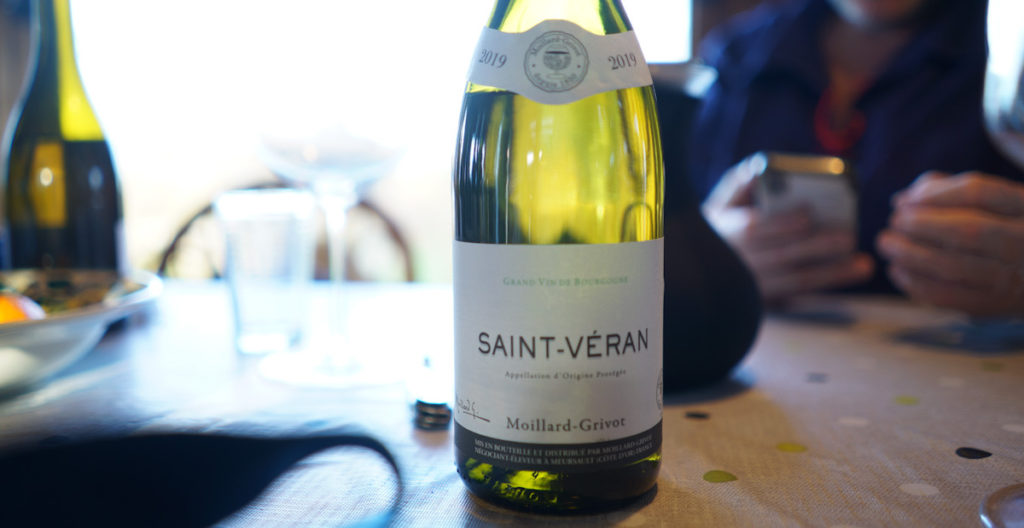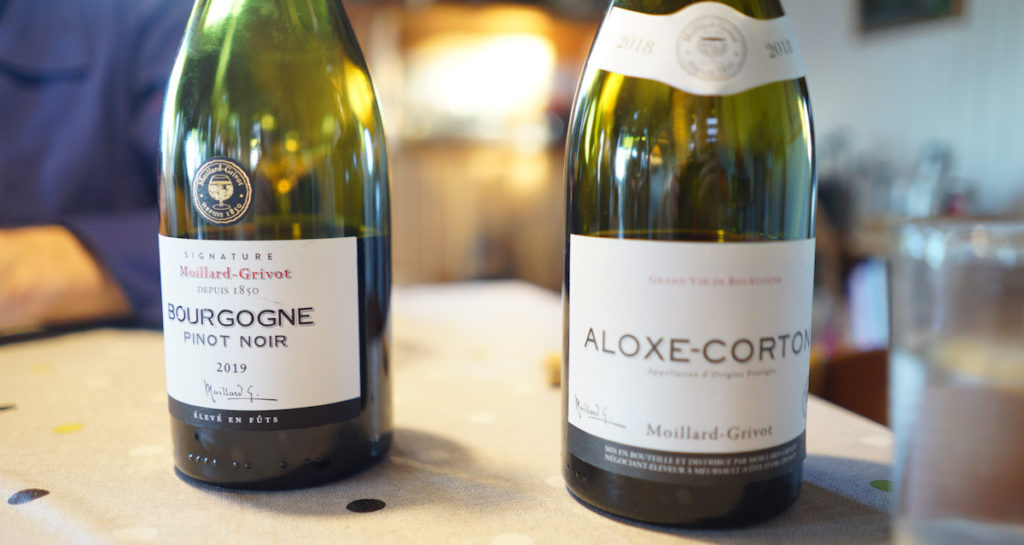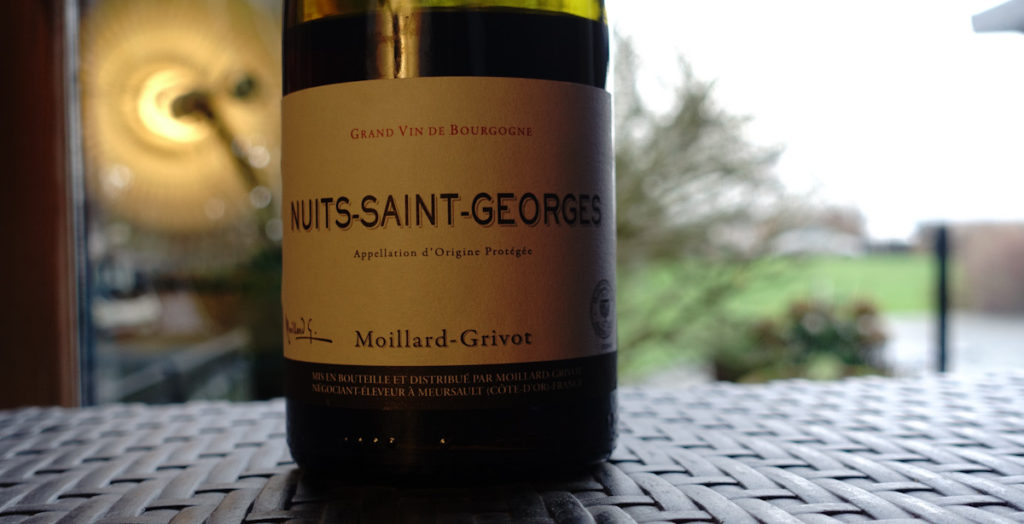Moillard is an old Burgundian name, and Moillard-Grivot is the negociant brand of the former Moillard estate. The domaine was founded in 1850, and was an important player in Burgundy until 2005, when the Thomas Moillard part was sold to Domaine Dujac and Domaine de Montille.
The negociant part, however, still exists under the name Moillard-Grivot, and is a large business based in Nuits-Saint-Georges.
The strong link to an estate with vineyards is no longer there, and the company currently is a classical negoce business – making wine from bought grapes, or buying finished wine for bottling.
From this business model Moillard-Grivot produces a range of wines, some of which were sent to me as samples by Maison Francois Martenot, the negociant owner of Moillard-Grivot and other negoce businesses.
Let’s taste!
I will keep this brief, and focus on the positives.
2018 vs 2019!
Moillard-Grivot Bourgogne Chardonnay 2019
Fruity and quite vivid – in reality seem purer than the signature Cuvee. A simple wine – but brings forward the beauty of the 2019 vintage. It’s not better than the signature … but somehow it drinks better. An industrial styled flair … but drinks.
(Drink from 2021) – Above Average – Tasted 12/01/2021
Moillard-Grivot Bourgogne Chardonnay Signature 2019
Not 100% pure, with a hint of oak, slight reduction and aromas that are not fully harmonious – let’s call it a yeasty note. This left me relatively indifferent, it being what one could call an international-style wine. Can you find Burgundy in the glass? Not necessarily. But nevertheless drinkable (here Zalto Universal was used).
(Drink from 2021) – Above Average – Tasted 04/01/2021
Moillard-Grivot Saint-Veran 2019
Perfumed and pure, with pear and white flowers – profoundly perfumed – and no oak to disturb the limited fruit flavours. Presumably higher yields, but that’s OK. This is a delicate and airy summer wine, with a slightly bitter tone on the finish to give it a bit of an edge. More an aperitif than a dinner wine.
(Drink from 2021) – Good – Tasted 04/01/2021 – 😄

Moillard-Grivot Montagny Les Bouchots 2018
This is oakier, with more character, fine freshness and balance, and a good saline note. Again, this has a high-yield character – polite, and not a disaster. But it has a weak chin, and lacks character.
(Drink from 2021) – Above Average – Tasted 04/01/2021
Moillard-Grivot Bourgogne Rouge 2019
This seems overcropped: Pinot at high yields is often not exciting. With quite awful cherry stones in the bouquet, this is not showing well, currently at least. It does not contain much of the 2019 energy.
(Drink from 2021) – Below Average – Tasted 04/01/202170p
Moillard-Grivot Bourgogne Rouge Signature 2019
Signature Bourgogne Pinot Noir has perhaps a bit more of the same-style fruit. While better, it is still quite indifferent, with the oak camouflaging potential ugliness lurking below. Works better with the oak somehow.
(Drink from 2021) – Average – Tasted 04/01/2021

Moillard-Grivot Aloxe-Corton 2018
Rich and more generous, somewhat reduced and chemical on the mid-palate, this lacks the depth and true character of the appellation. But some hints of Aloxe can be found.
(Drink from 2025) – Average – Tasted 04/01/2021
Moillard-Grivot Nuits-Saint-Georges 2018
Fairly well balanced, and somewhat on the lighter side for the vintage. Concentration-wise this is fine, although lacking some energy on the mid-palate. Warm on the palate, with a slight tone of molasses and a nice mineral note. If one squints, a hint of Nuits-Saint-Georges can be detected. Be careful with larger stems (Riedel Sommelier), as the wine starts to fall apart in them. Riedel Vinum gives a better result – this is good advice for all the red cuvées below.
(Drink from 2025) – Above Average – Tasted 30/12/2020

On the positive side
One could take the ratings above as negative, but one shouldn’t necessarily. These are commercial wines made for immediate consumption, and let me be very clear: There are much, much worse wines to be found. Most consumers don’t have a concept of how poor some wines can be.
At best, these are middle-of-the-road Burgundies with some weaknesses and some minor issues, but rarely really severe problems. This is important for markets that need large volumes.
This is what you will get if you buy random Burgundies without detailed knowledge of the wines, the producers, and the area: not better or worse than average, run-of-the-mill wines.
The above statement might sound scary to some…and it is. But buying Burgundies requires skill, knowledge, and sometimes even luck. But first and foremost it requires a genuine interest in the area.
And the question 2018 or 2019? The wines tasted do not answer this in depth – but somehow the 2018 vintage underlines what these wines are generally missing: energy and vivacity.

 - A true vin d’émotion – a Burgundy of passion
- A true vin d’émotion – a Burgundy of passion - A truly hedonistic wine – lively and enjoyable
- A truly hedonistic wine – lively and enjoyable - A vivacious wine for pure indulgance
- A vivacious wine for pure indulgance - A Vin Vif - fresh, energetic and with a light appearance
- A Vin Vif - fresh, energetic and with a light appearance
Leave a Reply
You must be logged in to post a comment.